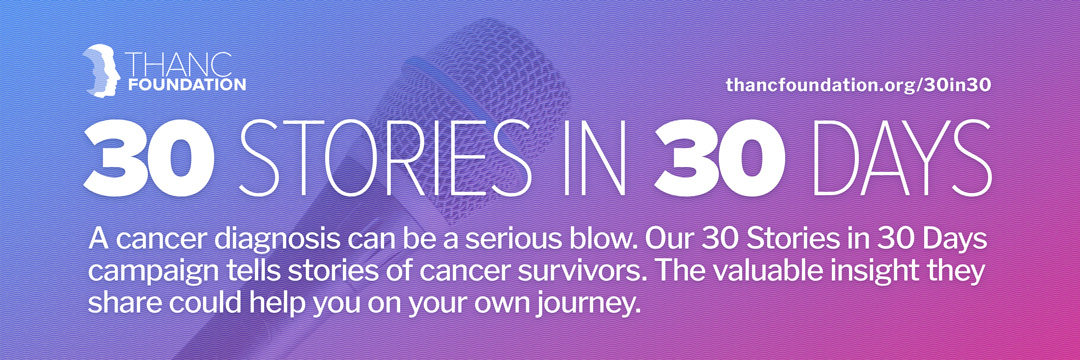Medullary thyroid cancer is diagnosed using the same standard methods as other types of thyroid cancer. Thyroid nodules are commonly discovered by a patient at home or by a physician during a routine physical exam. They may also be discovered incidentally on unrelated imaging studies such as a chest CT scan, an MRI of the cervical spine, or a Doppler ultrasound study of the carotid arteries.
In general, the standard diagnostic approach for thyroid cancer includes: physical examination, imaging, blood tests, and a fine-needle biopsy. Patients can expect their doctor to have a discussion with them about the risks, benefits and alternatives to each of these approaches.
Physical Exam
To start, a physician will feel (“palpate”) the neck to detect any abnormal swelling, hardness, tenderness, or asymmetry. Vocal cord function and ease of swallowing may also be assessed depending on patient symptoms.
Imaging
Imaging scans provide doctors with an inside view of the body. Imaging of the neck will be required to determine the size and location of a thyroid nodule and to get information about the surrounding thyroid tissue and the nearby structures such as lymph nodes, blood vessels, nerves and muscles. It is a vital step prior to any treatment decision. For thyroid cancer, the gold standard initial imaging test is an ultrasound.
Read more about Thyroid Ultrasounds
In some cases, doctors may also recommend more advanced imaging studies such as a CT scan or an MRI. These studies are especially important in evaluating patients with medullary thyroid carcinoma who have significantly elevated levels of calcitonin (> 500 pg/mL) which may indicate disease outside of the thyroid gland and neck.
Blood Tests
Blood tests are used to detect thyroid hormone levels circulating in the body. Generally, thyroid nodules do not make thyroid hormone. However, some nodules do make excess thyroid hormone, which can cause significant symptoms, and can be detected on a blood test.
If medullary thyroid cancer is suspected preoperatively, doctors may order additional tests, such as Calcitonin (a hormone produced by the thyroid which helps regulate blood calcium and phosphate levels) and Carcinoembryonic antigen (a blood marker that has been shown to increase in certain cancers, such as MTC).
Read more about Thyroid-specific Blood Tests
Patients with suspected MTC will likely also undergo genetic screening for certain mutations.
Biopsy
The best way to determine if a thyroid nodule is cancerous is with a fine needle aspiration (FNA) biopsy to remove a small piece of tissue and examine it under a microscope. This procedure is performed with local numbing medicine under the guidance of an ultrasound, and is essentially risk free. Read more about FNA biopsies.
The majority of thyroid nodules are benign (not cancerous). Only about 5–15% of nodules are found to be cancerous after a biopsy. Since benign thyroid nodules are very common, not all nodules need to be biopsied, especially if they are very small (< 1 cm). However, nodules that grow or appear “suspicious” on ultrasound should be evaluated further with follow-up ultrasounds and a biopsy.
A diagnosis of medullary thyroid cancer can be made with an FNA alone about 50–80% of the time. Otherwise, the diagnosis will require pathologic examination under the microscope following surgery. If the biopsy is suspicious but not certain, sometimes the tumor cells from the FNA will be stained and tested for calcitonin to best detect and confirm the medullary carcinoma diagnosis.
However, in some cases, the diagnosis of medullary thyroid cancer cannot be made until the thyroid nodule is surgically removed.
The Bethesda System
In general, FNA results are reported using the Bethesda System, which is a 1–6 scale used to predict how likely it is that the biopsied nodule is cancerous. It is important to know that a doctor will not be completely sure about the pathology for the nodule until it has been surgically removed and examined under the microscope. Keep in mind this is different than cancer staging.
Bethesda I (1)
Non-diagnostic / Unsatisfactory
Meaning
This means that the sample of cells taken by the needle was inadequate, so the biopsy cannot provide any useful results. Usually the biopsy should be repeated.
Bethesda II (2)
Benign
Meaning
This means that no cancer was detected. The risk of this being inaccurate and the nodule actually being a cancer is 0–3%.
Bethesda III (3)
Atypia of Undetermined Significance / Follicular Lesion of Undetermined Significance
Meaning
This means that the diagnosis was uncertain, or indeterminate. The cancer risk in this case is 10–30%. A doctor should either repeat the biopsy, order molecular testing, or perform a thyroid lobectomy.
Bethesda IV (4)
Follicular Neoplasm / Suspicious for a Follicular Neoplasm
Meaning
This indicates a 25–40% risk of cancer. Further molecular testing or thyroid lobectomy is recommended.
Bethesda V (5)
Suspicious for Malignancy
Meaning
This indicates a 50–75% risk of cancer and patients should undergo thyroid lobectomy or total thyroidectomy in most cases.
Bethesda VI (6)
Malignant
Meaning
This confirms a 97–99% risk of cancer and patients should undergo thyroid lobectomy or total thyroidectomy in most cases.












